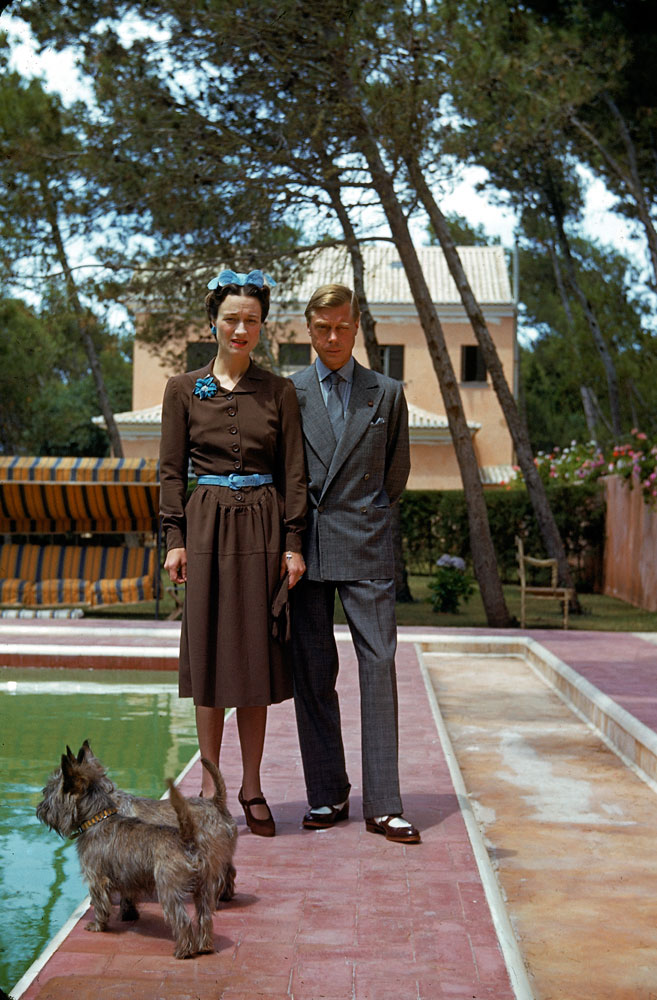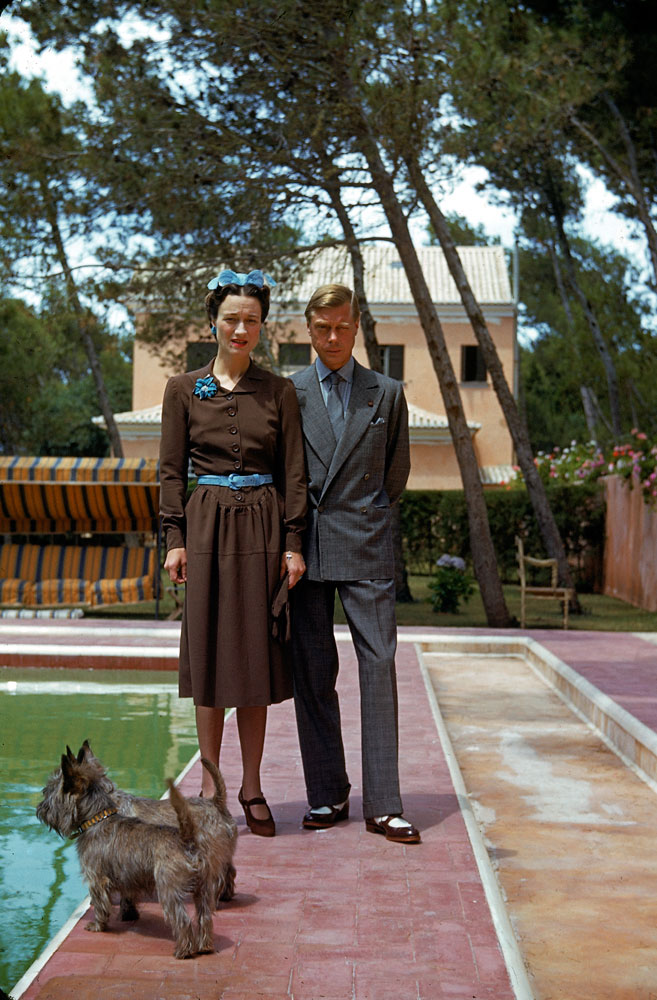
Wallis and Edward, the Romance of the Century. The evocative phrase so often attached to the marriage of the esrtwhile King of England and the twice-divorced American socialite, Wallis Simpson, has a wonderful ring to it. After all, what sort of cold-hearted wretch wouldn’t thrill, even a little bit, to the story of a ruler of an ancient realm abdicating his throne so that he might marry his true love? What kind of flinty-souled Scrooge would even question motives, or reasons, in the narrative of a former monarch finding happiness with a “commoner” from across the sea?
And yet … there’s just one little catch. History (as well as authorized and unauthorized biographies, magazine articles, movies, newspaper stories and more) suggest that the “romance of the century” was, in fact, more or less like any other marriage: there were good times, and bad times, and little evidence that the former outnumbered or outweighed the latter.
For example, the balance of power in the relationship was, for long stretches of the marriage, completely out of whack. (Most men and women, if they’re honest with themselves and with each other, will admit that even when a marriage is founded on genuine love and respect, it’s impossible to ignore the central role that the wielding of power — with a lower-case “p” — can play in ensuring or wreaking havoc with a relationship.) The Duchess was, by almost all accounts, the protagonist in the marriage. She was the more outspoken, the more driven of the pair, while the Duke frequently seemed content to play the doting husband to his glamorous, intelligent and unapologetically ambitious wife.

But even if the romance between the Duke and Duchess was, as millions of people around the globe so earnestly wished it to be, a marvelous union made stronger by the remarkable sacrifice that paved its way — even if the romance, in others words, really was the Romance of the Century — there would still be those nagging little details that, over the years, have cast an enduring pall on the Windsors’ tale. (Click on the picture at left for a larger view of pages from LIFE magazine, and photos from the Duke and the Duchess’ apparently jaunty journey through Nazi Germany in 1937.)
The trouble with the image that so many people still evidently harbor of the 20th century’s gleaming, flawless romance is that, in short, the gleaming, flawless romance never really existed. That the Duke and the Duchess loved one another, in their way, is something that even their most vocal detractors — especially the Duchess’ vocal detractors, and there are legions of them — readily admit. But beyond their powerful attraction to one another, the Windsors also shared some of the less-savory sensibilities common to so many of their upper-crust peers in the late 1930s and even into the war years of the 1940s. Namely, they displayed a comfort with far right-wing movements and ideologies — grounded, in large part, in an abhorrence of far left-wing ideologies — that at times was difficult to distinguish from infatuation.

The two, after all, gladly met with Hitler during their highly publicized tour of Germany in 1937, and neither of them displayed much compunction about associating with figures suspected of being pro-German, if not outright fascist. Even in the midst of the Second World War, when England was fighting for its life against the Reich and the Windsors were passing the time in the Bahamas — where the Duke was made Governor — neither of them worked overtime to dispel the notion that, in the end, it didn’t much matter to them whether or not Germany won the war.
That the Duchess hated England was an open secret; that many in England, and especially many in the royal family and the higher reaches of government, despised and distrusted her in return was equally well-known. Such a toxic dynamic between the former Wallis Simpson and so many in England hardly excuses the laissez-faire attitude that both the Windsors seemed to adopt toward the fate of what, after all, was the Duke’s ancestral home. It does, however, help explain it. How many of us, after all, can maintain even the appearance of goodwill toward those who publicly and privately deride us?
But in the end, 75 years after they wed, maybe it’s about time that the “Romance of the Century” tag is retired, and we try to see the Windsors for what, in an elemental way, they were: a married couple who lived much of their private lives in public, and upon whose marriage countless people projected (and still project) their own hopes, fears, passions and fantasies. There’s really no need to despise them; there’s no need to admire, or celebrate, or try to emulate them, either. We’ll just wish them a happy 75th anniversary, and leave them to history.
Credits: top, Philippe Halsman / LIFE Magazine; bottom, David E. Scherman / Time & Life Pictures / Getty Images

More Must-Reads from TIME
- Inside Elon Musk’s War on Washington
- Meet the 2025 Women of the Year
- The Harsh Truth About Disability Inclusion
- Why Do More Young Adults Have Cancer?
- Colman Domingo Leads With Radical Love
- How to Get Better at Doing Things Alone
- Cecily Strong on Goober the Clown
- Column: The Rise of America’s Broligarchy
Contact us at letters@time.com